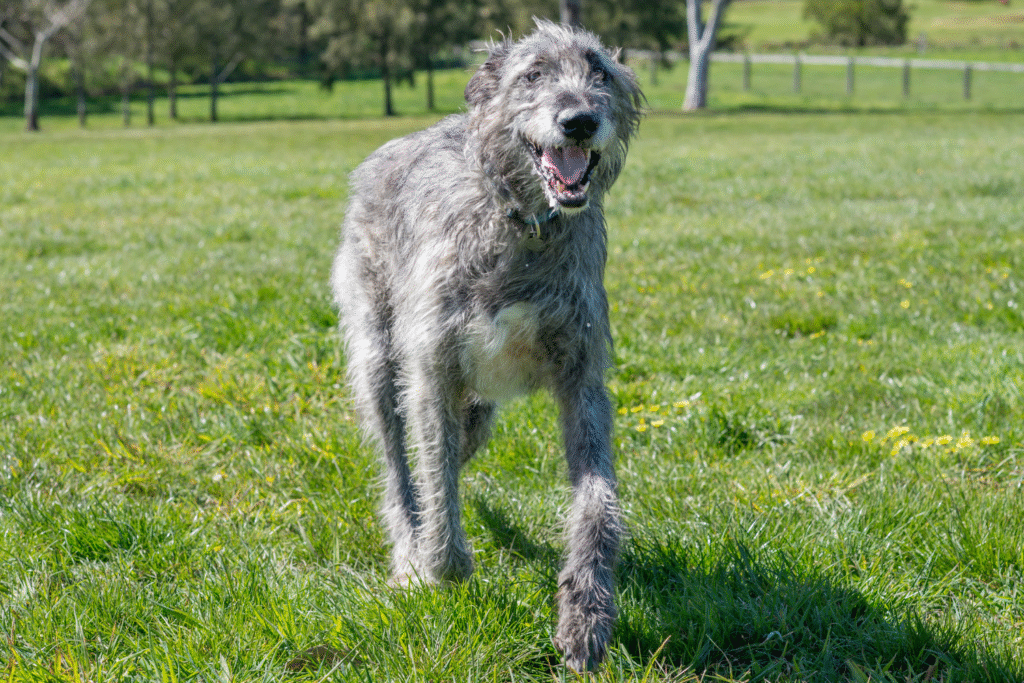Early warning signs can save a dog’s life.

Congestive heart failure, or CHF, isn’t a sudden event in dogs—it’s a slow, silent progression that can take months or years to show itself. While any breed can develop heart disease, some are genetically predisposed to it. The early signs can look deceptively simple: fatigue on walks, coughing at night, or breathing faster while resting. Yet these tiny changes are the body’s first distress signals. Recognizing which breeds face the highest risk can help owners act early, when medication and diet changes can make a profound difference in a dog’s lifespan.
1. Cavalier King Charles Spaniels face the earliest onset.

This breed’s signature sweetness hides a major health risk. According to the American College of Veterinary Internal Medicine, over half of Cavaliers develop mitral valve disease by age five, making it one of the most heart-prone breeds. The valve’s slow degeneration causes backflow, leading to fluid buildup and fatigue. You might notice subtle coughing or refusal to jump up on furniture. Early detection through regular echocardiograms can help delay progression. Without monitoring, what begins as a faint murmur can spiral into full CHF shockingly early in life.
2. Doberman Pinschers often develop silent heart muscle failure.

Unlike valve disease, the Doberman’s danger comes from dilated cardiomyopathy, where the heart muscle weakens and enlarges until it can no longer pump efficiently. As stated by the Merck Veterinary Manual, Dobermans are genetically prone to this condition, which can go unnoticed for years until sudden collapse occurs. Owners often describe “off days” that seem mild—until they’re not. Regular ECGs and Holter monitors are critical, especially after age five. These quiet symptoms, once understood, reveal just how stealthy canine heart failure can be in its earliest phase.
3. Boxers develop arrhythmias that precede full heart collapse.

Boxer cardiomyopathy, or arrhythmogenic right ventricular cardiomyopathy, causes abnormal rhythms that disrupt oxygen flow long before structural failure sets in. As reported by the Journal of Veterinary Cardiology, many Boxers appear healthy but carry inherited electrical irregularities in the heart’s right ventricle. The result can be fainting spells, staggering, or moments of confusion. These episodes are often dismissed as clumsiness or overheating. In truth, they’re early heart warnings written in muscle spasms. Screening programs and genetic testing now help detect these risks before they turn fatal.
4. Great Danes’ massive size magnifies their cardiac stress.

These gentle giants carry hearts that work overtime just to move blood through their large frames. Their size alone predisposes them to dilated cardiomyopathy, often worsened by rapid growth during puppyhood. Owners sometimes mistake early fatigue for laziness, when it’s really a red flag. Preventing excess weight and feeding balanced diets designed for large breeds can reduce strain on their heart walls. Each skipped exercise or heavy meal quietly compounds the pressure on their already vulnerable circulatory systems.
5. Dachshunds often show heart murmurs before middle age.

Despite their small stature, Dachshunds develop mitral valve disease at rates similar to much larger breeds. The strain of years spent standing upright or barking excessively can contribute to cardiac wear. Owners may notice faint panting or restless nights as fluid begins to accumulate. Their short chests amplify even small breathing changes, making symptoms noticeable if you’re paying attention. Timely cardiac evaluations can mean years of extra health before serious heart complications begin.
6. Miniature Poodles hide heart issues behind cheerful energy.

Poodles’ outward liveliness can make early symptoms easy to overlook. A subtle decrease in playtime or a new cough might be dismissed as aging, but their smaller hearts are particularly sensitive to valve deterioration. Long-term dental disease can also worsen cardiac stress, as oral bacteria enter the bloodstream. Clean teeth and annual checkups aren’t just cosmetic—they’re frontline heart protection. The trick is learning to read “off” days as possible early cardiac clues instead of personality shifts.
7. Cocker Spaniels develop both structural and electrical heart problems.

This breed is vulnerable to a double challenge: valve deterioration and rhythm disturbances. Both conditions can progress unnoticed until fluid builds up in the lungs, causing labored breathing. Owners sometimes notice they stop greeting at the door or seem anxious for no reason. These small shifts often precede visible symptoms by weeks. Gentle exercise, low-sodium food, and periodic ultrasounds can catch the decline before it becomes irreversible. Awareness turns ordinary routines into early interventions.
8. Boston Terriers are prone to chronic murmurs from birth.

Their compact chests and narrow airways already challenge their circulation. Add in a congenital tendency toward mitral regurgitation, and the heart spends years compensating for poor efficiency. They may start panting heavily during mild play or sleeping in unusual positions to ease pressure. Since their facial structure makes breathing issues common, many heart signs get misread as respiratory ones. Spotting the difference can be lifesaving, turning a misdiagnosis into a manageable condition instead of a sudden crisis.
9. Chihuahuas can mask severe heart disease for years.

Tiny hearts beat faster, but that rhythm can hide gradual valve deterioration. Many Chihuahuas live years before owners notice occasional coughing or slowing down. Because they’re so light, fluid buildup takes longer to reveal itself. Once it does, breathing becomes strained and energy levels drop sharply. Early heart scans, especially in older dogs, can prevent sudden decompensation. What seems like harmless snoring or tiredness could be the body quietly waving a warning flag.
10. Irish Wolfhounds’ size shortens their cardiac lifespan.

Among all giant breeds, Irish Wolfhounds are particularly prone to dilated cardiomyopathy. Their immense height and weight put extraordinary demand on cardiac muscle fibers, which weaken with age. Symptoms often begin subtly: mild exercise intolerance or a dry cough after rest. Without regular monitoring, their size conceals disease until the heart can no longer compensate. The reality is simple but sobering—the bigger the breed, the heavier the toll on the heart, and the more vigilance their owners must bring to every breath.
